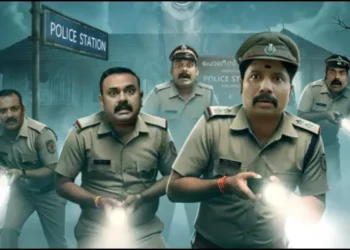In Indian cinema, each year brings a wave of commercial hits, but only a select few manage to alter the industry’s trajectory forever. We’ve seen monumental successes like Baahubali and KGF push Telugu and Kannada cinema into uncharted global markets. Yet, occasionally, a single film doesn’t just break records—it reshapes narratives, elevates technical standards, inspires generations of filmmakers, and redefines how audiences engage with the medium.
For Telugu cinema, one such transformative milestone was achieved in 1989 with Shiva, directed by Ram Gopal Varma and led by superstar Akkineni Nagarjuna.
A Film That Changed the Rules
Those who experienced Shiva during its original release recall its almost electric presence on screen. While younger viewers may have missed the initial cultural storm, stories about its impact have lived on through repeated television airings and home video releases. Varma has acknowledged that the central concept took loose inspiration from Bruce Lee’s Return of the Dragon, where a lone figure confronts a network of aggressors. In Shiva, Nagarjuna embodies a determined college student who rises against the toxic blend of campus politics and criminal dominance, ultimately facing Bhavani (played by Raghuvaran), a feared underworld figure.
Innovations in Storytelling and Technique
The film’s strength did not rest solely on its plot. Instead, its cinematic language broke new ground. Shiva introduced South Indian audiences to Steadicam technology, crafting fluid, immersive visuals. Ram Gopal Varma’s meticulous use of silence, tension-driven pacing, and naturalistic fight sequences marked a decisive departure from over-the-top action norms.
Equally revolutionary was its sound design. Every note and pause carried intent, with Ilaiyaraaja’s background score delivering an emotional intensity that remains striking decades later. Even in its new remastered form, these sonic elements feel ahead of their time.
The 4K Dolby Atmos Restoration
The freshly restored 4K version, enhanced with Dolby Atmos, preserves the gritty aesthetic through careful color grading while amplifying the already masterful soundscape. Unlike special-effects-heavy spectacles that age rapidly—as evidenced when revisiting parts of Baahubali—Shiva thrives because it was captured on film and grounded in realism, mood, and narrative strength.
The restoration trims certain songs, including “Kiss Me Hello,” resulting in tighter pacing without sacrificing emotional depth.
Timeless Appeal
Thirty-five years on, Shiva stands unaged—a testament to storytelling that prioritizes atmosphere and authenticity over flashy graphics. Whether you’re revisiting it as an ardent fan or discovering it for the first time, Shiva 4K offers an experience that is equally thrilling today as it was in 1989.























